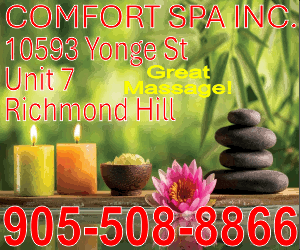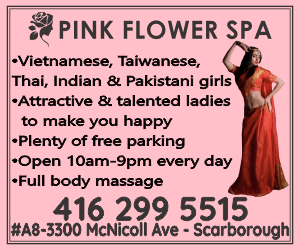M
mnews
Guest

Since modernity, home as an unwavering haven has been a privilege abided by kinship, property, and citizenship. For many migrant Asian femme bodies working in the massage and sex work industry across Queens, New York, home is transient—a yearning that keeps their tired hands busy and a dream that draws them to lay in a foreign bed at night. Lisa, a migrant Chinese massage worker and an outreach leader at Red Canary Song (RCS)—a grassroots collective of migrant Asian massage workers, sex workers, and allies advocating for decriminalization and labor protection—rehearses homemaking in spaces in her two massage parlors in Flushing. Home, for Lisa, is not a promise of equity but a web of urban hideaways for chosen kinship—the source of a collective capacity to cope with the unfathomable conditions characteristic of the criminalized and stigmatized massage and sex worker community. As such, the interconnected spaces of massage workers’ collective home(s) also function as sites of resistance.
The fabricated narratives of Asian femme bodies in massage parlors as forced captives and victims of sex trafficking hint at the homemaking struggles of migrant workers within the global capitalist arena. Over the past two decades in the US, the widespread moral panic surrounding human trafficking has been co-opted and promoted by anti-sex work organizations, anti-trafficking rescue industries, religious groups, and politicians. White saviorism has been adopted to justify the surveillance of Asian massage parlors as potential locales of forced sex work. This framing of Asian massage parlors further conflates sex work with human trafficking, confusing choice and coercion. Caught within this moral panic, migrant Asian massage workers are regularly racially profiled, over-policed, harassed, fined, detained, arrested, and deported—all in the name of “rescue” rationalized by American slogans to end sex trafficking.
Facing pressure to decriminalize sex work by sex worker coalitions such as RCS, New York City has developed an alternative rhetoric of law enforcement. This includes citations from the Department of Buildings for “work without a permit” and “illegal occupation,” which result in lease disputes, forced displacement, financial coercion, and prostitution charges. These punishments perpetuate the vulnerability of migrant Asian femmes into a “zone of nonbeing.” In response, the urban fabric of massage parlors has become a rhizomatic site of solidarity from injustice, where sex workers’ liberation is not one of poiesis, of using politics, but rather of homemaking. In other words, through the making and remaking of massage parlors, Lisa and RCS assert their presence, claiming homemaking and the right to home with steadfast perseverance.
When faced with systematic brutality, economic injustice, and capitalist conquest of racialized and migrant bodies, the ability to home-make and to assert presence challenges the status quo and offers an alternative modality for worlding. Since its formation in 2017 to honor Yang Song, a massage worker who jumped to her death off her parlor’s balcony during a police raid in Flushing, RCS has protested the persistent police brutality against migrant Asian sex workers and advocated for the full decriminalization of massage and sex work through solidarity building and grassroots empowerment. In practice, RCS’s worker-led mutual aid network rehearses the migrant Asian femme praxis of homemaking between domestic and urban scales, across civic and cultural landscapes, molding rooms for the economic and social survival of this extremely marginalized community.
In the Parlor: Flower Spa
A migrant Asian femme’s massage parlor is both a commercial space, where care practices are traded for bare livelihood, and a makeshift home that exposes them to socio-political violence. Uncredited, criminalized, and physically taxing, the toil of massage work takes place in a space saturated with desire and duress. As Lisa remarks, the massage industry sustains migrant blue-collar workers who are essential to the functioning of New York City, yet massage workers experience both the disrespect for and exploitation of their services:
Honestly, in my heart, I didn’t want to do massage work. When you first come to a place, you know nothing—it’s like being in total darkness. If you don’t work, how are you supposed to survive, to eat, to pay rent? Eventually I took on a night shift. I worked 10:30am to 10:00pm here, and 11pm to 4am at another massage place. I kept this up for about half a year. Over a period of four months, I only rested for a day and a half.
How do I say this … Honestly, we’re doing a good deed. We help migrant workers in this city. When they get tired, we help ease their weariness. For them, this is also a form of bodily catharsis, a little consolation. It isn’t easy for these migrant working men. Their homes are not here, neither are their wives and children. When you see this expression of being desired on their faces, you can’t help but feel some sympathy.
Home, along with the very means to home-make, has long been a subject of class, racial, and gender subjugation. In migrant Asian communities in New York, home is often a symbol of having overcome such subjugations: one would not be surprised to see an Asian household living in a French or Spanish revival-style house in an affluent Queens suburbs, with little representation of their heritage. Similarly, for Asian woman across the Western hemisphere, their concurrent sexualization by the male orientalist gaze and their desexualization by the white feminist movement push stereotypical Asian aesthetics further into the margins. The architecture of massage parlors, however, embraces racial and gender stereotypes to effectively attract business—even if only to subvert it. Despite discreet storefronts (to remain inconspicuous), Lisa uses pink floral motifs and traditional Chinese decorations in the stairwell leading to Flower Spa to advertise and embellish her care service for migrant working-class males, who are often treated as undeserving of attention, touch, or sexual pleasure. Though Lisa doesn’t consider herself a spatial practitioner, her work at the margins of place-making and design offers alternative modalities of a feminist commons and infrastructure of care that disrupt the white feminist retooling of patriarchal scripts.
Operating from a third-floor commercial walk-up in Flushing, Flower Spa was passed down from a friend and colleague, who had herself taken over the lease from another friend who had used the space as a beauty salon. Sheltering each successive homemaker, the space embodies their cumulative migrant Asian touch and reveals the tactics through which they have negotiated precarity. DIY adjustments and alterations can be seen throughout the parlor, with paint smears covering the gold molding, the strategic deployment of curtains, and half partition walls between rooms.
Lisa’s homemaking—like all homemaking—is not just a material process, but a socio-political-spatial negotiation of property ownership, zoning laws, construction codes, leases, permits, and licenses. These imbricated layers of bureaucracy are the mechanisms through which racialized and gendered capitalism renders massage parlors—such as Lisa’s—a trap of violence, oppression, and exploitation. Typically on a commercial lease, massage parlors are not allowed to be inhabited, which means that any trace of Lisa living there—such as a bed, closets, kitchens, and showers—is potentially evidence of an imposed narrative that depicts her as an enslaved sex trafficking victim, and thus justifies her “rescue” by means of criminalization. Frequently surveilled by DOB inspectors, FDNY inspectors, NYPD, federal and city vice squads, and landlords, massage workers are forced to secretly construct domestic space. Lisa’s homemaking thus becomes a process that creates home while also ensuring it does not look like home: a massage bed doubles as a personal bed; a slow-cooker heats stones and prepares meals; a minifridge holds folded hand towels and leftover dim sum. This ambiguity of objects blends spaces—reception-living room, hallway-kitchen, massage chamber-bedroom—and situates fleeting domesticity within a commercial context to produces a sense of belonging for Lisa and her massage worker sisters.
One spatial tactic used to create this ambiguity is hanging curtains along each window and doorway. Curtains in commercial storefronts are an easy way to mitigate massage workers’ exposure to harm, including harassment, hate crime, and police brutality. On the interior, however, as a domestic decoration, curtains accent clients’ fantasies. Lisa hangs curtains with varied transparencies and textures throughout her parlor to filter natural light through floral patterns and partition chambers with cosmic motifs. A versatile system, chrome rods and hangers allow Lisa to reconfigure massage chambers for clients into temporary guestrooms for sisters who need an overnight shelter, accommodating different modalities of care. The DIY aesthetics of the curtains are not incidental: anticipating police raids, forced terminations, displacement, and relocation, curtains are an affordable symbol of massage workers’ profession and homemaking.
Lisa’s parlor has three massage chambers: one is for bodywork with clients, one is her own tiny bedroom, and one is a guest room for sisters. The partitions mediating the three chambers are not floor-to-ceiling walls. Each has a foot-and-half gap at the top to avoid having to file for permits—and entering a bureaucratic system that allows NYC DOB inspectors to penetrate homes to monitor illegal inhabitation. However, even with this gap, a DOB inspector once claimed the construction of “full-height partitions” in Lisa’s parlor lacked construction permits and revoked the commercial permit for her business.
In the Streets
Existing within the margins not only requires a community of resistance, but also creates a space of radical openness. Lisa’s parlor shape-shifts from a site of toil, vulnerability, and survival into a shared home for rest, grief, and celebration, offering incremental and non-urgent methods of asserting presence through homemaking. However, without access to services and welfare, the establishment and maintenance of support networks is exhausting work. Improving the general public’s understanding of massage workers’ experiences and reframing anti-trafficking rhetoric are not only imperative to workers’ access to social aid networks, but also paramount to the full decriminalization of their work. Therefore, RCS painstakingly stages workers’ transient homemaking practices in public spaces as a strategy for collective empathy building. In these actions, Lisa’s negotiation of the thresholds between commercialization, fetishization, domestic violence, and survival is repeatedly borrowed as an environmental narrative to ease the audience into a trauma that is too disturbing to process and into a position that is too radical to fathom otherwise.
Collective actions are often triggered by inexcusable tragedies. The violence leading to the death of Yang Song, as well as the 2021 Atlanta spa shootings, demonstrated the need for shared space where Asian American communities could mourn and unite. Yang Song, who is honored in RCS’s name, was subjected to harassment and blackmail by the police and forced to become an informant against her fellow workers in order to avoid jail time and punishment. When she refused, the police raided her parlor, prompting Yang Song to jump out of a window to her death. Many workers face similar pressure when police raid their businesses; the so-called “rescue” being performed is merely a pretense to throw them back to the death trap that they risked their lives to get out of. As such, media coverage, incarceration, the judicial system, and deportation are akin to death sentences. By organizing community vigils on public sidewalks and parks, as well as in community and institutional galleries, RCS holds space for anyone who feels the need to come together and pay tribute to every sister lost to police brutality and white supremacy.
Veneration of the dead is a traditional part of Asian homemaking. Historically, in China, rituals at generational ancestral halls and shrines are typically led by men in the family, whereas rituals around ancestral tablets in domestic spaces are often delegated to wives. The constant presence of lost ones within domestic spaces reinforces gender roles and obligations. Predominantly performed by women, these rituals for the deceased not only embody feminist care practices but also guarantee a woman her rightful status as a wife in the family, ensuring she is not neglected after her death. If, in the words of Christina Sharpe, defending the dead “demands vigilant attendance to the needs of the dying … and also to the needs of the living,” confronting the reality of massage workers’ deaths builds space for the living to endure and defend against the injustices that led to their passing.
The stigmatization of massage work, however, combined with the cutthroat culture of competition within the community, makes it difficult for massage workers to come together for these rituals. To pay off debts in their home-country, many massage workers symbolically disown themselves from their families when coming to New York and never reveal how they earn their money. Mainstream societal disapproval of massage work makes it a source of shame, which is even more extreme for those who are married with children. When massage workers are affected by sexual violence, police brutality, or the death of a loved one in the United States, family can no longer function as a source of sympathy or release—sometimes even the opposite. In a recent RCS oral history interview, a worker shared about the traumatic experience of her arrest being on the news and being found out by her family back in China:
She [my daughter] knew the past two years [that I was in prison] I was away. [During the two years I was there] we made one three-way call. I called my husband [from prison], and he then called back home in China … Just this one time. She probably could tell a little [about what’s going on] and asked me “when will mommy come home.” I said: “Mommy will come home soon.”
While many massage workers seek emotional assurance in fellow sisters—their “chosen family” —when faced with disheartening news, the socio-emotional need to grieve is not always a given. Many do not see their work as dignified. Some workers would rather dissociate themselves from the industry as soon as they pay off their debts, accrue enough money, or receive a green card or citizenship. Some workers even joke about the murders, violences, and deaths within the community to further distance themselves from their reality. Reckoning with these realities, RCS positions the massage parlor–home as an effective site for cultivating empathy in the living and acknowledging their responsibilities as survivors. The massage parlor–home is not simply a place to sleep but a group of people to share experiences with, relieve adversities, and exchange care. Their homes in Flushing, shared in kinship, are transient sanctuaries.
Set up in the public plaza of Washington Square Park, RCS hosted the 8LIVES Vigil in New York City one year after the 2021 Atlanta spa shootings, when a white supremist murdered Delaina Ashley Yaun, Tan Xiaojie, Feng Daoyou, Paul Andre Michels, Hyun Jung Grant, Park Soon Chung, Kim Suncha, and Yong Ae Yue. In recognition and solidarity with massage workers across state and national borders, RCS led a coalition of sex worker rights advocates, abolitionists, labor organizers, and allies to create a temporary sanctuary as a public vigil. Resembling the shared home of massage parlors, a memorial was set up where workers of various Asian ethnicities could feel the security and liberty to practice veneration rituals in concert with each other. The uncanny contrast between the simplicity and purity of the makeshift home and the extremely public context of Washington Square Park highlighted the gunman’s perverse impulse to destroy a space of shelter and care constructed by migrant Asian massage workers.
The 8LIVES Vigil replicated the transient homes massage workers live in. Behind the white curtains that typically establish thresholds of nostalgia and eroticism, exposure and protection, isolation and connectedness, Lisa, Charlotte, Lynn, and other members of RCS built massage beds in the form of ancestral altars. Paintings of the victims by a migrant Korean massage worker hung on the fabric at eye-level. The massage parlor aesthetic was appropriated to confront the fracturing of kinships within the context of shame and to reimagine the perseverance of workers. Held in public, the vigil denied the stigmatization of the tragic event and the suggestion that the six Asian massage workers were victims of human trafficking. Instead, it affirmed their existence as care workers and as victims of white supremacy. By bringing the intimacy of homemaking practices to those who have lost their lives, RCS expands the care praxis of massage workers to include those strained and tired by racial capitalism. Through a shared practice of veneration, the space holds everyone in a non-urgent, abundant space of honor.
In addition to DIY public installations in streets and parks, RCS also uses storefront gallery spaces as a stage to demonstrate for decriminalization and migrant justice, often upon invitation by queer scholars and cultural workers who share feelings of disenfranchisement. Displayed in spaces that are geographically and culturally central, yet physically and socially distant from workers’ communities, these exhibitions offer an archive and reflection of ritual, everyday practices while asserting the networks of aid within and by these marginalized communities. Furthermore, these collaborations between queer cultural workers and migrant massage workers produce an intangible infrastructure, intertwining forms of labor, care, and mutual aid. Neither grand gestures nor immediate actions, these moments offer an alternative temporality to the frenzy of crisis—an urgency felt as state and local forces increasingly occupy Queens. This way of amplifying the struggle and power of migrant massage workers also offers a counterpoint to narratives of assimilation.
On Lisa’s Block
As Lisa organized for and exhibited with Red Canary Song, she gradually expanded her sphere beyond the confines of her parlor. Frequently meeting massage workers and neighbors, and attending RCS meetings, vigils, and exhibits, Lisa became increasingly integrated into the Flushing community. The more she and other RCS members shared their work, the more the stigma surrounding the industry—at least on her block—was reduced. Occasionally, her neighbors at the street-level clothing store would even alert Lisa when cops were patrolling. Lisa made an agreement with the cafe downstairs from her parlor, paying a monthly fee to use their seating area to host and cater to sisters. The cafe’s back space acts as her living room whenever she needs it. Similarly, she established a relationship with the owner of the Chinese–Korean restaurant downstairs, enabling her to make custom kitchen orders and host dinner parties outside her small parlor. As a result of these and other relationships, Lisa’s “home” has expanded to consist of the bedroom in her parlor, a foyer downstairs at the clothing store, a living room in the cafe, a kitchen and a dining room in the restaurant, and an office at Flushing Workers Center.
Earlier this year, during a casual conversation at the cafe, Lisa learned about a vacant space upstairs. On an impulse, she decided to lease the space and open another parlor just a few storefronts over from Flower Spa, using the money she had saved up over the past few years. At the same time, the population of migrant massage workers in Flushing was growing. In response, Lisa has expanded RCS’s outreach to provide support for these newcomers. For many sisters who work near and far, due to the competitive massage market in Flushing Lisa is the only anchor point or sense of family they have other than their biological families in China. While she drafted blueprints for expanding her business and developing a new clientele, Lisa envisioned the new parlor as a haven for sisters just arriving in New York, while retaining Flower Spa as a hideaway for her friends and sisters. After two months renovating the rental unit, Lisa named the parlor after herself.
The new parlor’s interior not only attracts clients who desire a better quality of service and are able to afford a higher fee but also ensures that new migrants feel less vulnerable. Unlike Flower Spa’s thick timber door, the front door here is made of frosted glass. Behind it, a reception area equipped with a front desk and business cards creates a more commercial, rather than domestic atmosphere. Lisa branded the business as a cupping therapy parlor—a new specialty she invested in both training and equipment for. There are almost no hangings on the walls other than a few cupping and body meridian diagrams. While the paint color still matches that of her old parlor, Lisa fine-tuned it to a more subtle shade of pink and added colored lighting, which creates a softer, sanitized ambiance. Unlike the semi-open chambers in her old parlor, each massage chamber in the new parlor is fully enclosed—a feature that was already included when she leased the space—with standard doors and trimmings, though the walls still do not extend floor-to-ceiling. The interiors are equipped with extra quiet AC units and dimmable lights. Lisa also removed the shower—a common indicator of occupancy during DOB inspections—when she remodeled the bathroom with new white tiles and a touch of color, making it spacious and clean for clients to use.
The salary Lisa receives from coordinating outreach at RCS provides her more stability than is available to most of her peers in this industry. With this stability, she can act on the responsibility she feels to create a soft landing in New York for new sisters. Lisa typically shelters newly arrived massage workers within her new parlor for a few days to a few weeks. She trains new arrivals in various massage techniques, feeds them two meals a day, teaches them basic English and other survival skills, and pays them a base daily rate, regardless of whether they have clients or not. This generous way of operating is not particularly profitable—Lisa barely breaks even. Along with losing clients due to the recent escalation of policing, targeting massage and sex workers in Queens, Lisa also has to deal with high turnover rates of new sisters who are overwhelmed by the anxiety and stress resulting from their difficult migration across continents, as well as the realization that making a living on the other side of the world is no less difficult than back home. However, it has allowed Lisa to expand her homemaking and to create a destigmatized environment where Chinese migrants can find refuge.
Homemaking is a crucial tool for revolutionary praxis. The makeshift homes created within massage parlors reveal alternative ways of acting and being in a world that denies migrants’ rights and pleasures. As deployed by Asian femmes and RCS, home becomes a tool for steadfast perseverance. The community’s participation in cultural production grants workers self-esteem and a sense of social belonging, which translates into proactive daily engagement with mutual aid. These defiant political gestures build what bell hooks describes as “our capacity to envision new, alternative, oppositional aesthetic acts.” Lisa’s transformation since joining RCS, both personal and political, is documented in her continued interest in building coalitions. In an era in which impermanence is the norm, massage parlor–homes offer an alternative ontology of transience in globalization.






























































































